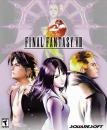Mandalore76 said:
I think you are confusing use of the term generations with the Bit Wars of the early 90's. Console manufacturers and video game writers of the day very definitely did use the term "generation" in their marketing and articles in the early 80's. The Colecovision and the Atari 5200 were both lauded as "Third Generation Systems" when they released in 1982 with near as you could get to arcade quality graphics on your living room TV at the time. They were a clear advancement from the Magnavox Odyssey (1972), Atari 2600 (1977) and Intellivision (1979) systems that preceded them. It's true that historians did later alter the generations by retroactively lumping both the Colecovision and 5200 back into the 2nd Generation many years after the fact. But, that doesn't mean that the term "Video Game Generation" was something that got invented in the PlayStation era. Take this 1982 article from Electronic Games Magazine, whose title reads, "Third Wave Video Gaming Comes to Market":
Also, see this review of the Colecovision and its games from the December 1982 issue of "Electronic Fun with Computers & Games" which literally breaks down home consoles by generation as viewed at the time: Third Generation"I’ve had a chance to carefully evaluate the ColecoVision versions of Donkey Kong, Venture, Cosmic Avenger, Lady Bug, and Smurf at press time and enjoyed them all immensely. Because of the ever-changing game screens, the high-quality graphics and the imaginative music and sound effects, I found the games to be always entertaining and rarely boring—no easy feat, with my limited attention span. If anything. my only complaint is that some people might find a few of the ColecoVision games to be too difficult—something that you don’t usually hear about a standard game. This can be good or bad, depending on how competitive you are. The ColecoVision games put other versions to shame. The VCS Donkey Kong, for example, gives you a simplistic “bare bones” display, without any of the subtleties or the arcade-like background music of the ColecoVision game. The VCS omits the last. most difficult level, the infamous “elevator level.” By comparison, the ColecoVision version was a near-perfect duplication of the arcade classic, with all of the sound effects and most of the visuals left virtually intact. The ColecoVision execs are extremely proud of their system, which they consider to be the first Third-generation programmable on the market, right after the original Atari VCS and Odyssey² (first-generation) and the Mattel Intellivision (second-generation). As one spokesman told me: “The coin-op designers are always worried about keeping the home versions of their games as accurate as possible and so far we’ve had nothing but praise for our ColecoVision designs.” I’d have to agree with his assessment. The only question that remains is whether or not Coleco will be able to get their system and games on the market fast enough. So far, dealers have been clamoring for the ColecoVision consoles, which have been in extremely short supply since their introduction this fall. My bet is that those consumers who are lucky enough to be first on the block with a ColecoVision will find the wait well worth it. The system is great, but there’s one thing Coleco has to fix. Before any game you have to stare at the words “ColecoVision” for 12 seconds. And when your game is over, you have to stare at it for another 12 seconds. Maybe Coleco wants to let us run to the refrigerator between hours of Cosmic Avenger, but when I play, I just want to play." http://vgpavilion.com/mags/1982/12/ef/game-workout-colecovision/ |
Very interesting. I had never come across or heard any of this stuff before. Although it’s a bit before my time. The mid-80s was when I got into gaming, and no one really spoke about generations of consoles until Mega Drive, and no one called it the fifth generation - it was the 16-bit generation. The understanding was generally tied to the bits of a system, and this continued even into the Dreamcast/PS2 era - where “128-bit” was used, even though that wasn’t accurate.
But, either way, it seems people using numbered generations are actually not in agreement with those early documentations either because they call this upcoming one the 9th generation. Those articles are talking about the 5200 and ColecoVision as the third wave, but that would make the NES/SMS wave #4, SNES 5, PSX 6, PS2 7, Wii/PS3 8, PS4 9, then PS5 would be the 10th generation. I’m assuming this represents the general thinking in the US (it definitely wasn’t the case in West European countries by the mid-80s until early 2000s), it still would not match the generation narrative people push today, that would still be inaccurate.
But anyway, thanks for digging those old magazines up. I’ve been digging up some stuff myself on the history of RPGs, and it’s very interesting when you get into the pre-Dragon Warrior stuff, that game has more of an impact on RPG design around the world than it’s given credit for... but I like to rant, and that’s a different story.
I describe myself as a little dose of toxic masculinity.



















